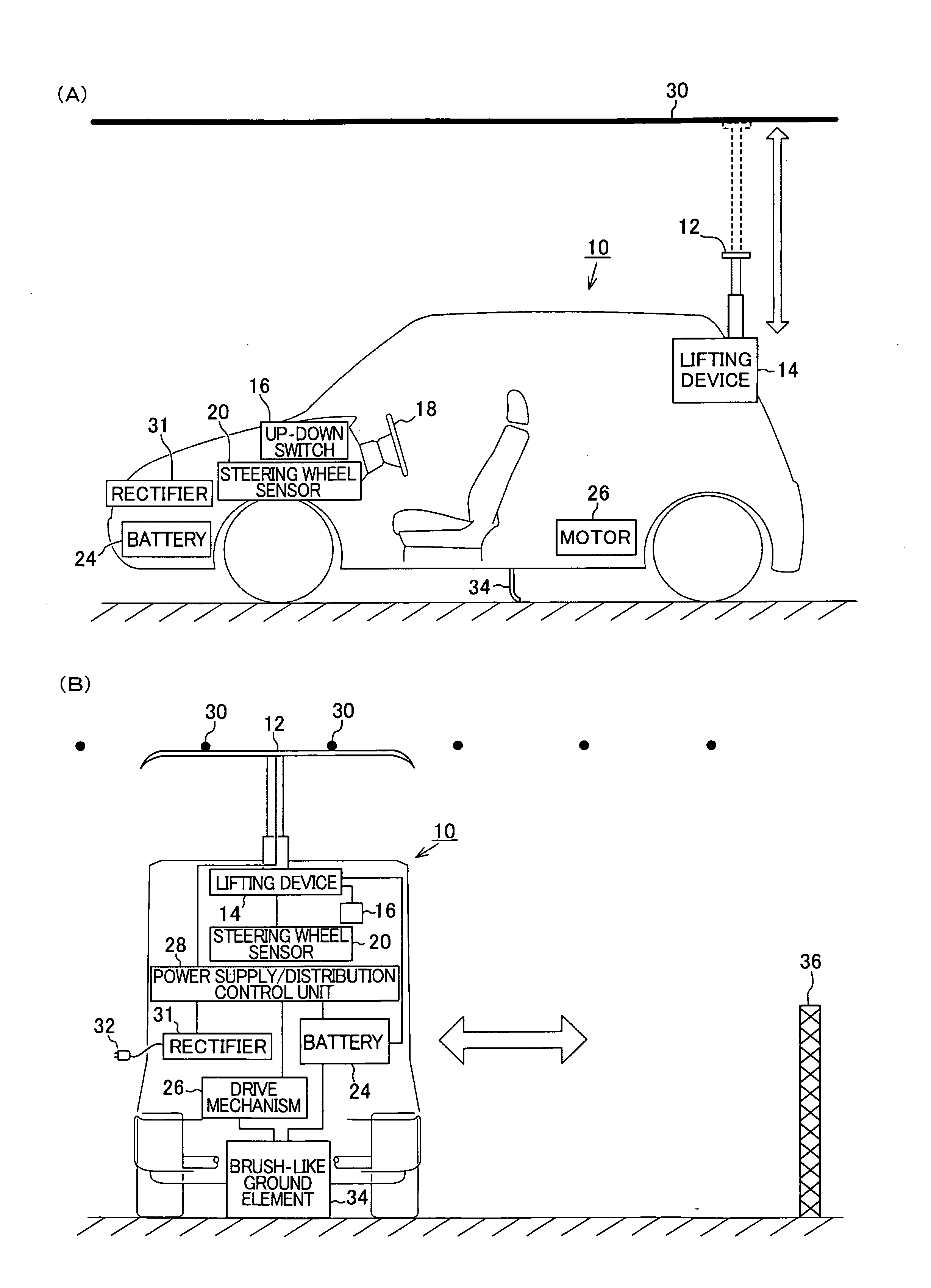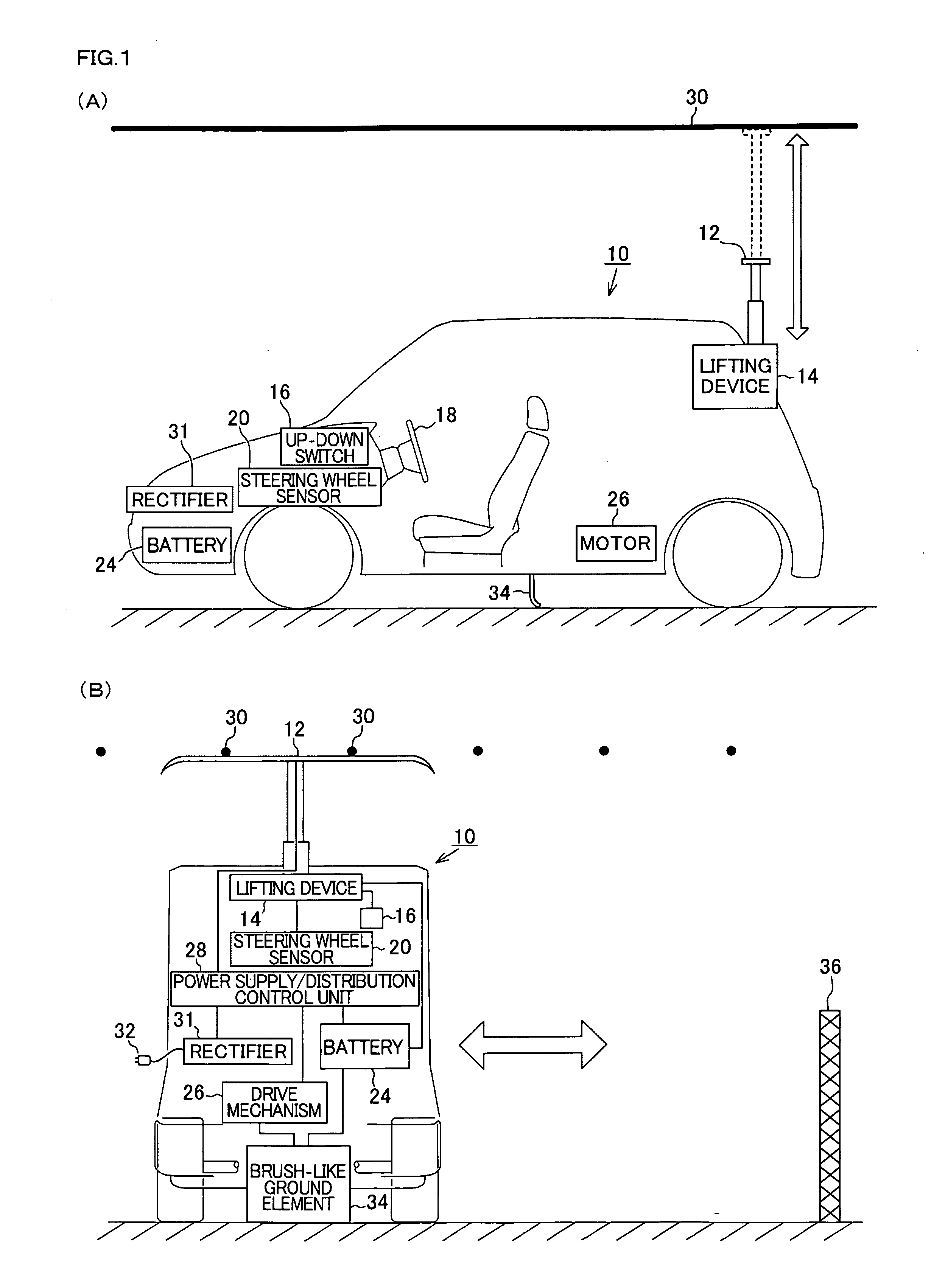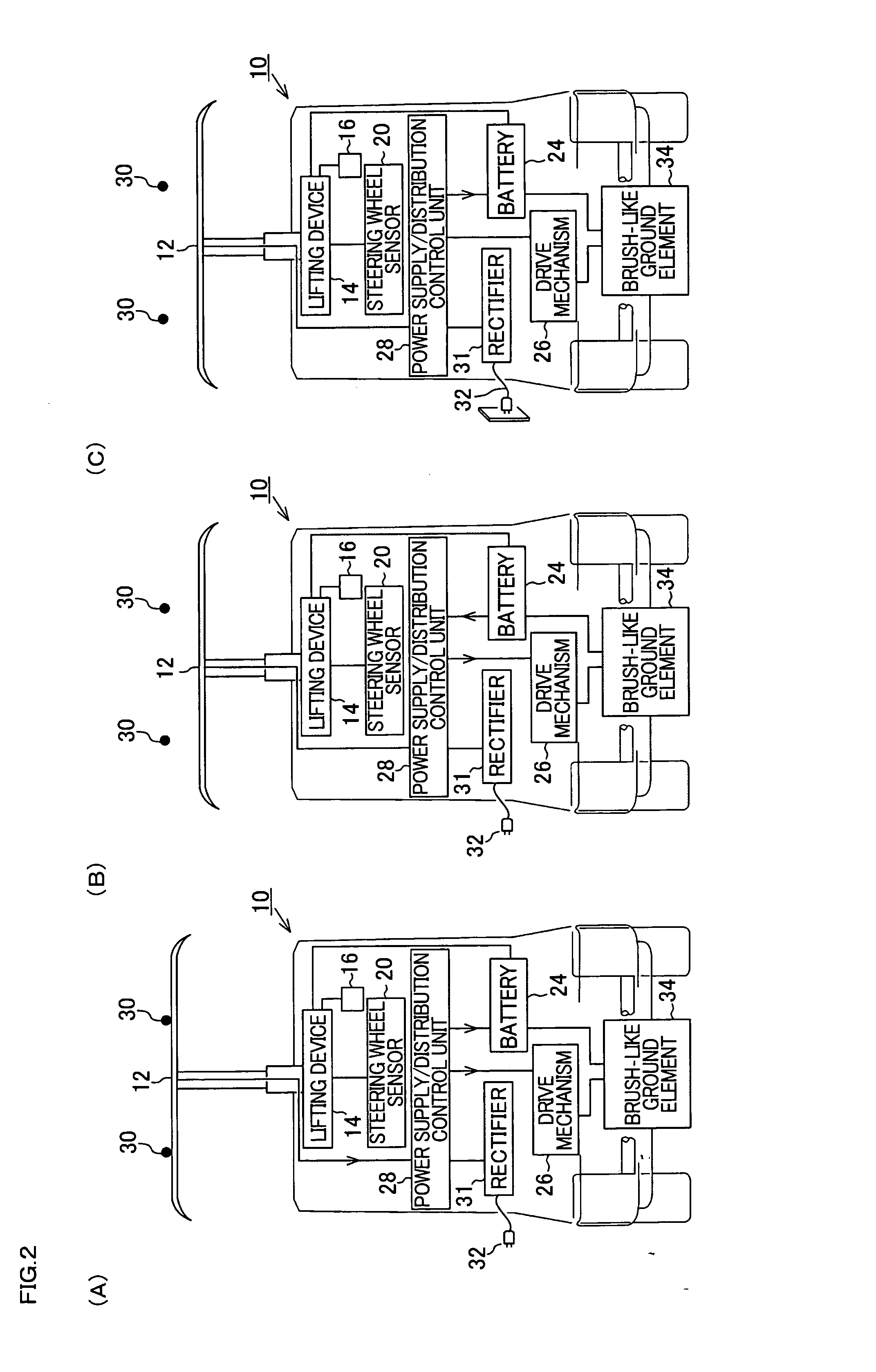Vehicle and traffic system
a technology of traffic system and vehicle, applied in the field of vehicles and traffic systems, to achieve the effect of no generation, excellent environmental effects and performances, and high degree of operation freedom of vehicles
- Summary
- Abstract
- Description
- Claims
- Application Information
AI Technical Summary
Benefits of technology
Problems solved by technology
Method used
Image
Examples
embodiment 1
[0061]First of all, referring to FIGS. 1 to 3, a description will be made of a 1st embodiment of the present invention. FIG. 1(A) is a diagram illustrative of principal constituent parts arranged in a vehicle 10 as applied to the present embodiment. FIG. 1(B) schematically shows how the vehicle is to be controlled and driven on the road. In those two Figures, it is to be understood that, as similar to ordinary electric vehicle driven by electric motor, the vehicle 10 of the present embodiment is provided with steering wheel, seats, front and rear wheels, a speedometer, an accelerator pedal, a brake pedal, and so forth.
[0062]In the illustrative embodiment, an electric power collector 12 is disposed at a point rearwardly and upwardly of the vehicle 10. And also, arranged above the road are a plurality of overhead lines 30 adapted for feeding electric power to vehicles, such that, for example, the overhead lines extend abreast along the road in a 10-cm spaced-apart relation with one an...
embodiment 2
[0078]With reference to the illustrations shown in FIG. 4, the 2nd embodiment of the present invention will now be described, hereinafter. FIG. 4(A) shows one variant of the present embodiment wherein a plurality of overhead lines 400 are shown and transversal lines 402 are electrically connected with those overhead lines 400, whereby all the overhead lines 400 are in an electrically connected relation with one another. Namely, each of the transversal lines 402 extends transversely of all the overhead lines 400 and has an electrical connection with each of the all overhead lines 400 and, with that arrangement, even if many vehicles running on the road happen to intensively cause their all electric power collectors to contact one overhead line 400 or one particular pair of the overhead lines 400, an electric power is then supplied from other remaining overhead lines 400, via the transversal lines 402, to the overhead line(s) 400 in question with which many vehicles are now connecting...
embodiment 3
[0079]Referring to FIG. 5, a 3rd embodiment of the present invention will be described, hereinafter. In the FIG. 5, there is illustrated a vehicle 500 basically similar in structure to the vehicle described previously, except that it has an electric power collector 502 which comprises a ringed contact element 502A and a generally T-shaped support rod 502B, such that the ringed contact element 502A is supportively connected with the lifting device 506 by that support rod 502B. The ringed formation of contact element 502A has the advantage that, irrespective of any direction in which the vehicle 500 may move towards the overhead lines, the ringed contact element 502A is positively brought in a sufficient contact with the overhead lines. Further, according to the present embodiment, an overhead line detection sensor 504 is shown as being electrically connected with the lifting device 506. The overhead line detection sensor 504 is adapted for detecting the presence and absence of overhe...
PUM
 Login to View More
Login to View More Abstract
Description
Claims
Application Information
 Login to View More
Login to View More - R&D
- Intellectual Property
- Life Sciences
- Materials
- Tech Scout
- Unparalleled Data Quality
- Higher Quality Content
- 60% Fewer Hallucinations
Browse by: Latest US Patents, China's latest patents, Technical Efficacy Thesaurus, Application Domain, Technology Topic, Popular Technical Reports.
© 2025 PatSnap. All rights reserved.Legal|Privacy policy|Modern Slavery Act Transparency Statement|Sitemap|About US| Contact US: help@patsnap.com



